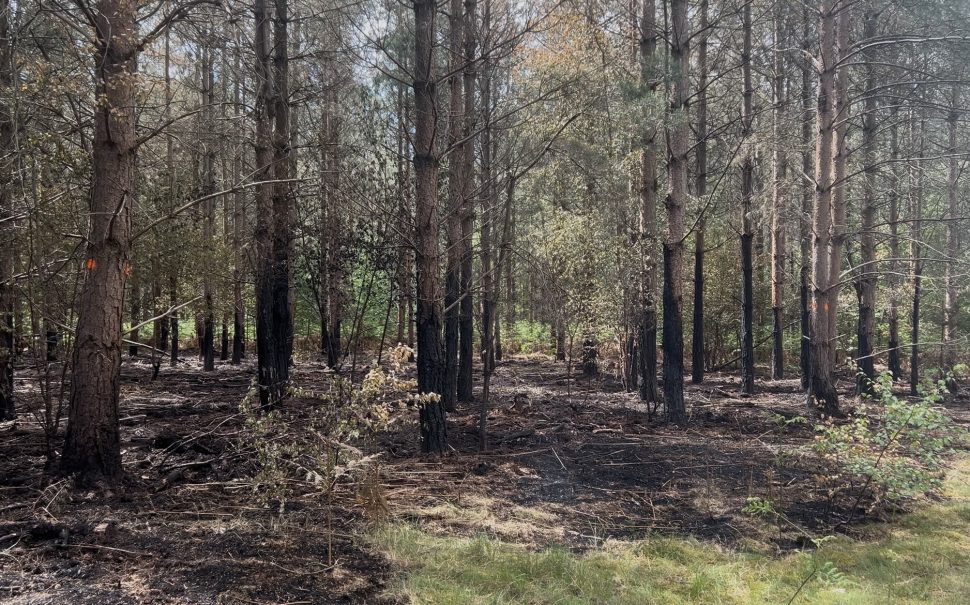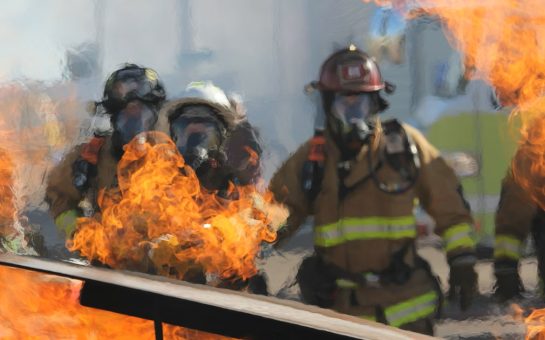Jane thought it was just another walk. Then she smelled the smoke. A few more steps and she saw the flames.
It was a hot, dry summer day in 2020 when Jane Bidwell, 58, was walking her dog Eddie in Thetford Forest, in Norfolk, and discovered a wildfire.
Jane said: “We could smell burning, so we took the dog with us and we wandered over, and it was roaring.
“The flames were higher than I was. The wind was whipping it up.”
Like Jane, many people will come face to face with a wildfire this summer, as the summer of 2025 has been predicted to be hotter and drier than usual by the Met Office.
And this has been reflected in wildfire incidents this year. According to the National Fire Chiefs Council, 564 wildfire incidents have been responded to by fire and rescue services in England and Wales between 1st January and 19th June 2025 – this is over double the same period in 2022, which went on to be a record year for wildfires.
In dry weather, Greater Manchester’s moorlands are particularly susceptible to wildfires.
Firefighter Jon Settle from the Norfolk Fire and Rescue Service said that more fires are expected this year due to the predicted weather.
He said: “We’ve had a couple of quiet years, but we are due a very hot one.
“If it’s hot and dry, it makes a massive difference. A little bit of rain massively reduces the chances.”
Compared to building fires, outdoor fires come with unique challenges.
Jon said: “The biggest issue with large wildfire jobs is looking at crew welfare. We’re out there for a long time and it gets very hot, very sweaty.
“We’re out in the middle of nowhere with limited resources, often with limited shelter as well.
“Just having enough food and enough water and enough rest is usually the biggest problem.”
While most house fires can be put out in as little as ten minutes, wildfires can take hours of hard work to extinguish.
Although weather and climate are big influences, Jon says most wildfires are caused by humans, commonly barbecues or deliberate arson.
He explains that this is because most people don’t understand how easily fires start when the land is hot and dry.
Jon said: “The UK is often quite wet and cold. When it’s wet and cold a discarded cigarette will do very little.
“But when it is very hot and dry something like that can start a very big fire very quickly, and people don’t often realise it.”
To prevent wildfires this Summer, Jon recommends following the Met Office’s Fire Severity Index, which assesses how severe a fire could become if one were to start.
Jon said: “At the moment we’re in a ‘very high’ risk status because it has been so dry and we’ve not had much rain.”
Kevin Cumming, Rewilding Director from Rewilding Britain, said Britain’s wildfire risk is exacerbated by land management. For example, land being drained for purposes such as housing, commercial forestry and agriculture.
Rewilding Britain is a charity which is restoring the environment through rewilding – the large-scale restoration of nature and natural ecosystems – to the point where they can look after themselves again.
For example, expanding ancient woodlands or reconnecting rivers with floodplains to restore their natural course.
Kevin explained that rewilding is a viable and cost-effective solution to many environmental problems, including wildfires.
Through rewilding, the processes by which land would usually deal with wildfires are restored.
He said: “You need to give the land a chance to deal with wildfires in the way it should.”
To prevent wildfires, Kevin said the first thing that should be done is look at how the water table can be restored.
An effective way of doing this in wooded or lowland areas is by restoring native species like beavers to the ecosystem who can help restore the water table naturally.
Kevin said: “Beavers are an amazing species. They’re what we call a keystone species. The impact they have on the environment is disproportionately large compared to other animals that are living in that ecosystem.
“Beavers build dams which naturally hold water in the landscape more. If you hold water in the landscape you start to make the land more resilient to wildfire.”
The logic is that a wildfire will get so far before it hits an area which is a lot wetter, and therefore a lot more difficult to burn – raising the water table makes land more resilient to fire.
The first pair of beavers were reintroduced to the wild in Dorset this spring, after the species was hunted to extinction in Britain in the 16th century.
A higher water table also brings about more diverse species of plants, trees and shrubbery which are associated with wetter land.
He said: “Those species hold more moisture than those in dryer areas, so even if the fire does reach them, they might not burn as hot, or burn for as long. It might slow the spread of the fire down.”
“You have to embrace a level of uncertainty with rewilding. What we want to do is have interventions that allow us to repair what we’ve done and allow what nature wants to happen to happen, and to provide it with the benefits it can then provide for us.”
Main image credit: Ellie McCreedy




